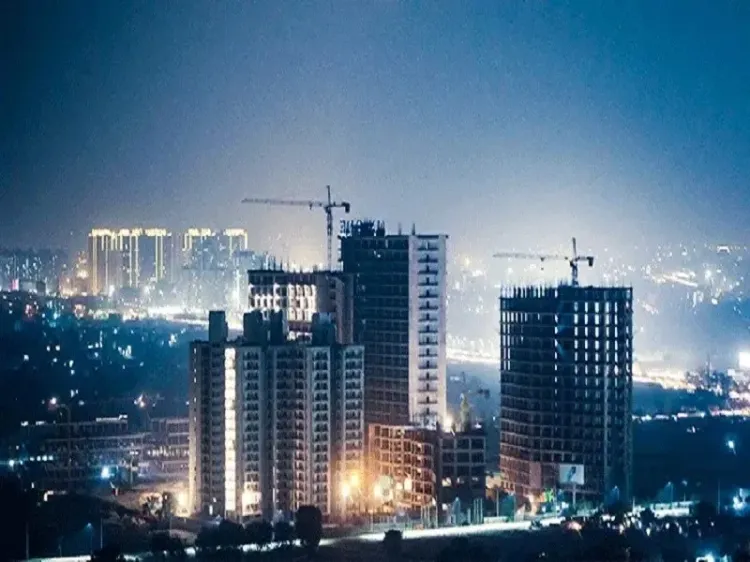Has Average Apartment Loading Reached 40% in Major Indian Cities?

Synopsis
Key Takeaways
- Average loading in top cities reached 40%.
- Bengaluru saw the highest increase from 30% to 41%.
- Mumbai has the highest loading at 43%.
- Homebuyers now prefer more amenities and livable space.
- Current regulations do not cap loading percentages.
Mumbai, June 9 (NationPress) The average apartment “loading” has climbed to 40% during the January-March period this year, a notable increase from 31% in 2019. Among the top seven cities, Bengaluru has experienced the most significant rise in average loading over the last seven years, jumping from 30% in 2019 to 41% in Q1 2025, as highlighted in a report released on Monday.
In response to the growing demand for modern amenities in housing projects, the loading factor has steadily increased across leading cities, according to the latest data from ANAROCK Research.
The Mumbai Metropolitan Region (MMR) continues to boast the highest loading among the top seven cities, with 43% in Q1 2025. This region has consistently seen an increase in average loading percentage over the years, rising from 33% in 2019 to 39% in 2022, and now 43% in Q1 2025.
In the context of residential apartments, the average loading factor represents the difference between the super-built-up area and the carpet area.
While the Real Estate Regulatory Authority (RERA) now mandates developers to disclose the total carpet area provided to buyers, there are currently no regulations that cap the loading factor in projects.
“The data from Q1 2025 indicates that 60% of the total area that apartment buyers in the top seven cities are paying for is livable space, while the remaining 40% comprises common areas such as elevators, lobbies, staircases, clubhouses, and terraces,” explained Dr. Prashant Thakur, Regional Director & Head — Research and Advisory at ANAROCK Group.
In contrast, Chennai has shown the least increase in average loading, recording 36% in Q1 2025, which reflects a local demand trend where homebuyers prefer to invest more in usable space rather than common areas.
In Delhi-NCR, the average loading percentage has risen from 31% in 2019 to 37% in 2022, and now 41% in Q1 2025. In Pune, it was 32% in 2019, increased to 36% in 2022, and stands at 40% in Q1 2025, according to the data.
Hyderabad has seen its average loading percentage rise from 30% in 2019 to 33% in 2022, and further to 38% in Q1 2025.
Historically, a loading of 30% or lower was considered standard.
“Today, a higher amenity loading has become commonplace across most developments, as homebuyers now expect more than just basic lifestyle amenities; they are looking for fitness centers, clubhouses, landscaped gardens, and grand lobbies,” noted Thakur.
In many instances, buyers in various cities, except in Maharashtra, remain unaware of the extent to which they are financing the overall usable space within their apartments.










